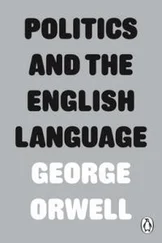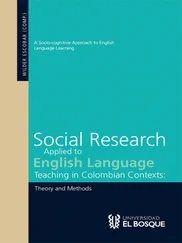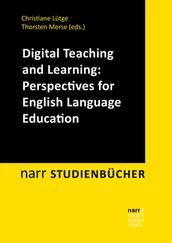208
and let the search engine do the rest. Alternatively, you can just surfthe Web, following your own path from linkto link to see where you end up.
But perhaps the most frequent and ubiquitoususe for Internet access is email (electronic mail) – you can send someone a message instantaneouslyanywhere in the world, and it’s both cheap and convenient. You’d better watch out for viruses, though!
Glossary
versatile– able to be used for many different purposes user-friendly– easy for anyone to use
associated equipment– machine used in conjunction with the computer monitor– the screen you look at
keyboard– the thing you type with
printer– the machine that prints out your documents onto paper hard disk– the computer’s built-in memory
floppy disk– a portable memory device for transferring information program– a set of instructions to allow a computer to perform a task instruction– command
word-processing– writing and editing documents spreadsheet– program for handling varied types of data access– get access to
every . . . under the sun– every kind you can think of field– area
navigate– find your way
keywords– important words
link– pointers on a website that take you automatically to other websites ubiquitous– existing everywhere
instantaneously– immediately, at once
virus– a program designed to find its way into a computer’s hard disk and damage it
13 The people
we met were
fantastic!
In this unit you will learn how to:
• how to use whoand thatin longer sentences
• use prepositions in longer sentences
• use more adverbs
Dialogue 1
Su is showing James some of her holiday photos.
JAMES:
Who’s this bloke?1
SU:
That’s the man who helped us when the car broke down. And next to him is the woman who was staying in the room below us.
JAMES:
And what’s this place?
SU:
That’s the building that used to be the National Library. Now it’s a drama school for people who want to be actors. And then . . .
[ she shows another photo . . . ]
. . . this is one of the students who showed us round the place.
[ . . . and another one . . . ]
JAMES:
And this must be the driver who drove you around.
SU:
Yes. We had two drivers – a man who didn’t speak any English, and a young woman who really did speak excellent English.
210
[. . . and another . . . ]
. . . And this is the plane that brought us back home.
[. . . and another . . . ]
. . . And this is the taxi driver that met us at the airport to bring us back to Brighton.
JAMES:
Looks like you had a great holiday!
SU:
Oh yes! The places we saw were amazing, the food we ate was delicious and the people we met were fantastic.
JAMES:
What about the money you spent?
SU:
None left!
1 blokeis a colloquial word for ‘man’
Dialogue 2
Helen and Justine are discussing clothes.
HELEN:
That’s a nice top, Justine.
JUSTINE:
Do you like it? I got it in a great little shop I found when I was doing the shopping in Brighton the other week.
HELEN:
It really suits you. So . . . where’s this shop then? I can picture myself in something like that.
JUSTINE:
Right – you know the Indian restaurant on London Road that does vegan dishes?
HELEN:
The one we went to on Stuart’s birthday?
JUSTINE:
The one we got thrown out of after Stuart made himself sick, yes. Well, behind it there’s a public garden that most people don’t know about. And at the other end there’s a little bakery that makes banana doughnuts. You go past there . . .
HELEN:
Oh God, Justine – can’t you just take me there?
JUSTINE:
OK – we’ll go and see if we can find something you like.
211
Idioms
• the other weekmeans ‘ two or three or a few weeks ago’ ( not ‘last week’); we can also say the other day(= ‘two or three or a few days ago’), and the other morning/afternoon/evening/night
• this( shop) means ‘the (shop) you’ve just been talking about’
• oh God: we use this expression in informal situations if we are annoyed, or worried, about something. It’s not rude, and it won’t offend people you are on informal terms with – it’s really a very gentle little phrase!
Language point 75 – relative clauses:
‘who’ and ‘that’
Look at these two sentences:
a
That’s the man
b
He helped us with the car
We can join these together to make one sentence by using who/hu/
weak form /hυ/ instead of hein sentence (b): That’s the man who helped us with the car
Now look at these two sentences:
a
That’s the building
b
It houses the nation’s modern art collection
Because buildingis a thing and not a person, we use that(/ðt/, weak form /ðət/), not who, to join the sentences together: That’s the building that houses the nation’s modern art collection
But did you notice that, later in Dialogue 1, Su says: And this is the taxi driver that met us at the airport
212
With things we have to use that, but with people we can use either who or that:
The woman who lives next door
The woman that lives next door
‘The building who stands opposite the bank’
The building that stands opposite the bank
In more formal English whichcan be used instead of thatfor things: The building which stands opposite the bank
This word is not normally used to join sentences in colloquial English, although it is okay in colloquial English as a question word
– see Language point 60.
At the end of the dialogue Su says:
The food we ate was delicious
The people we met were fantastic
She could have said:
The food that we ate was delicious
The people who we met were fantastic
but she leaves the joining words out . We can do this in English when the word before the joining word is the OBJECT in the sentence, and the word following it is the SUBJECT. But we can’t leave out the joining word when the word before it is the SUBJECT. Compare these two sentences:
Object
Subject
Читать дальше












